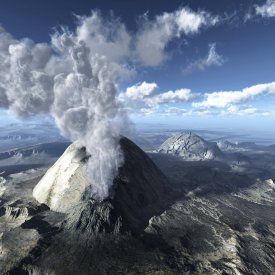The Mastersizer 2000 laser diffraction particle size analyzer from Malvern Panalytical is one of the first instruments applied by scientists when assessing the respiratory health hazard of volcanic ash. Dr Claire Horwell, Director of the International Volcanic Health Hazard Network, receives volcanic ash samples from all over the world at her lab at Durham University, UK.
Working within the Institute of Hazard Risk and Resilience, Dr Horwell's remit is to provide rapid advice as to the likely health hazard of ash from particular volcanoes to support agencies working at the site of the eruption. Clearly the events of this year with the eruption of Eyjafjallajökull in Iceland and the effect on air travel have heightened awareness internationally of this work.

"The Mastersizer 2000 is the first instrument we turn to with a new sample," explains Dr Horwell, "because it quickly provides a reliable measurement of the grain size of the volcanic ash, and in particular, quantifies what fraction of the ash lies in the sub- 4 micron range. Material in this range will tend to deposit in the deep lung if inhaled. If we find an appreciable respiratory risk we can advise those working on the ground and can go on to carry out further tests that quantify the potential for harm in greater detail."
The volcanic samples are measured following ultrasonication of the ash in water in order to achieve full dispersion of any very fine particles, which may form strongly-bound agglomerates during eruption and sample transport. This ensures that the primary grain size is measured and avoids underestimation of the respiratory hazard. The dispersion process is fully automated within the Mastersizer 2000 system, allowing measurements to be completed in just a few minutes.
The amount of ash in the sub-4 micron region varies considerably. Research suggests it can lie anywhere in the range 0 to 17% depending on the style of the eruption and the distance from the volcano. For samples containing health-threatening quantities of inhalable fines, compositional analysis provides more detailed information as to the likely impact of the ash in vivo.
The IVHHN is an umbrella organization launched in 2003 that provides research and information on volcanic health hazards. It currently involves 31 experts from 25 international institutions. Working across diverse scientific disciplines such as volcanology, epidemiology, toxicology, public health and physical chemistry, these experts share the common aim of determining the health effects of volcanic emissions.